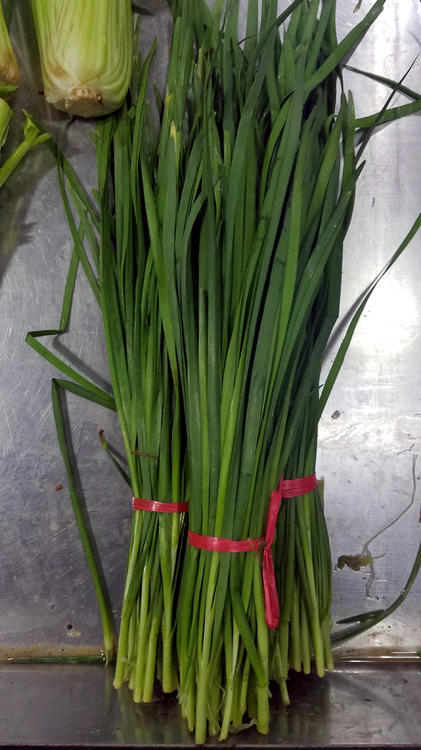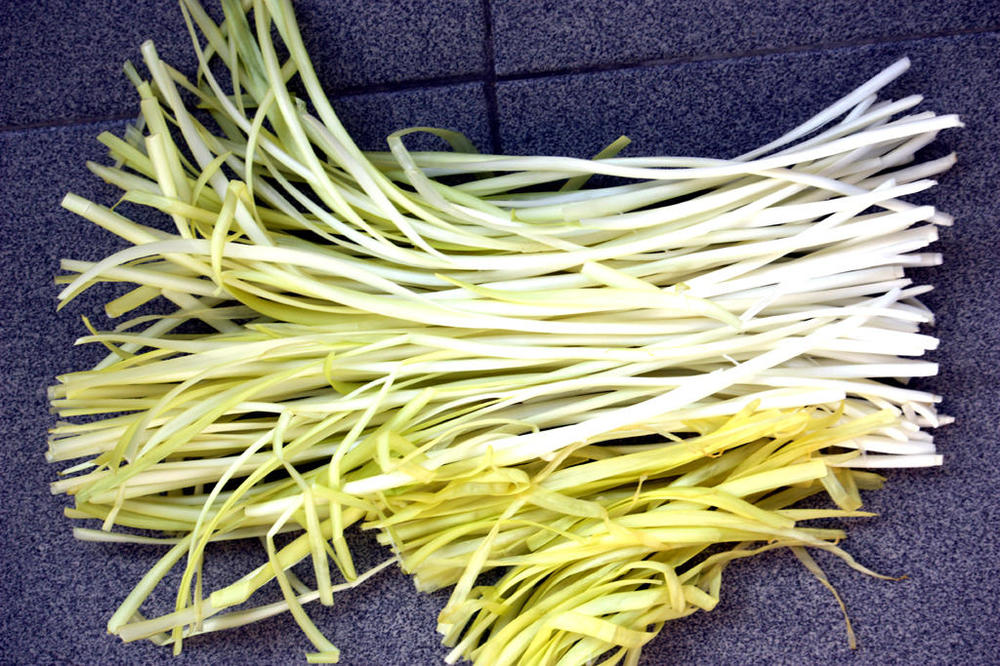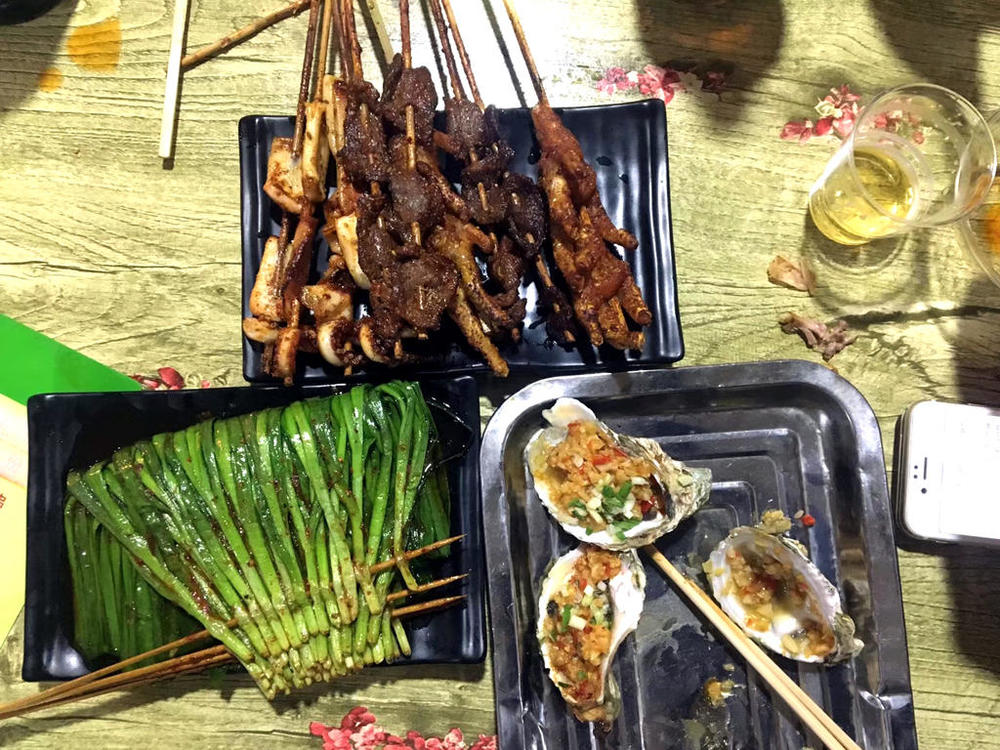Allium tuberosum
韭菜 (Mand: jiǔ cài; Cant: gau2 coi3) is known by several names in English including garlic chives, Oriental garlic, Asian chives, Chinese chives, Chinese leek etc.
These also come in two other forms. Those above are the leafy stems. Left to grow a little. they develop flower buds. At this stage, they are sold as 韭花 (Mand: jiǔ huā; Cant: gau2 faa1) where 花 means 'flower'.
Then we have 韭黄 (Mand: jiǔ huáng; Cant: gau2 wong4), which are the stems of the same plant, but grown under reduced light conditions so that they do not develop the green colour, but are yellow, the meaning of 黄. To my palate and nose, this technique also increases the garlic flavour and scent considerably. This is a good thing in my book.
All of these forms are used to finish off stir fries and also frequently added to various forms of dumplings, especially jiaozi. I've seen the green stems pickled like kimchi and been served the yellow ones just as a vegetable side dish.
Also, the green stems (first picture) are often grilled over charcoal at road side stalls and sold for next to nothing. You can see them in the image below, taken at a roadside grill place in Nanning, Guangxi.
Finally, they are used in pancakes in the same manner as scallion pancakes.






